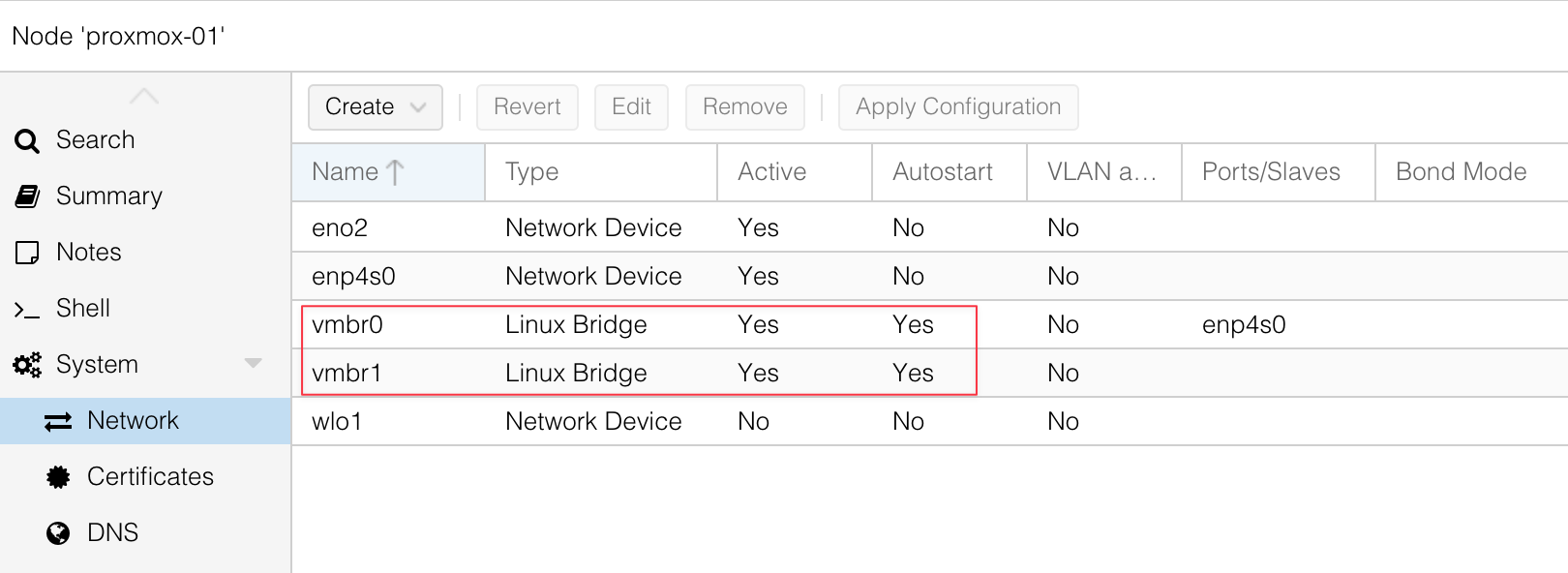Netlab: The Fastest Way to Build Network Labs
Suresh Vina published a great netlab tutorial, going from the very basics to a full-blown MPLS network with custom multi-vendor device configuration. Thank you!
Automate IP, VLAN & BGP Resource Allocation With Infrahub Resource Manager

Have you ever had two teams accidentally assign the same IP address? Or heard someone ask, “Can I get a VLAN? I’m not sure which one to use.” I’m also certain you have because manually managing infrastructure resources like IP addresses, IP prefixes, VLAN IDs, and BGP ASNs is still all too common in a lot of environments. Manual resource management is also time-consuming and painful, and often results in duplicate resource assignments, which means more work to clean things up later.
Disclaimer – OpsMill has partnered with me for this post, and they also support my blog as a sponsor. The post is originally published under https://opsmill.com/blog/infrahub-resource-manager-automate-allocation/
The Infrahub Resource Manager is designed to eliminate those pains while speeding up your workflows. The Resource Manager automatically hands out resources from managed pools and ensures every allocation is tracked and unique.

In this guide, we’ll show you how the Infrahub Resource Manager works and give you three ways to build pools and allocate resources with it.
Common use cases for the Infrahub Resource Manager
The Resource Manager can be used in many areas of network design and automation. A common use case is data center expansion Continue reading
The Governance of the Root of the DNS
The draft report of the Root Server System Governance Working Group is now out for public comment. Here's my thoughts on this report.HN794: How the Bundle Protocol Enables Interplanetary Networking
How might we get network traffic from Earth to a lunar base? Or Mars? Or to spaceships carrying astronauts or probes exploring space? And how do we get it back? The problem, among other things, is latency. The answer isn’t TCP/IP. The answer is…complicated. On today’s Heavy Networking we explore the challenges of getting packets... Read more »With AI Boom, Dell’s Datacenter Biz Is Finally Bigger Than Its PC Biz
Every OEM in the world has two choices.
Choice One: Sell the Nvidia AI hardware and software stack and boost the top line while diluting operating income in their systems businesses. …
With AI Boom, Dell’s Datacenter Biz Is Finally Bigger Than Its PC Biz was written by Timothy Prickett Morgan at The Next Platform.
Hedge 278: Advocating for Yourself
“Advocate for yourself!” What does this mean, and how can you do it? Alexis Bertholf joins Tom and Russ to discuss practical strategies to advocate for yourself.
download
TNO040: From ARPANET to the Stars: Vint Cerf on the Past and Future of the Internet
Vint Cerf, widely recognized as one of the fathers of the Internet, is today’s special guest on Total Network Operations. He currently serves as Vice President and Chief Internet Evangelist at Google. His pioneering work began back in the 1960’s when he was involved in the ARPANET project. Alongside Bob Kahn, Vint co-invented the TCP/IP... Read more »Automating threat analysis and response with Cloudy
Security professionals everywhere face a paradox: while more data provides the visibility needed to catch threats, it also makes it harder for humans to process it all and find what's important. When there’s a sudden spike in suspicious traffic, every second counts. But for many security teams — especially lean ones — it’s hard to quickly figure out what’s going on. Finding a root cause means diving into dashboards, filtering logs, and cross-referencing threat feeds. All the data tracking that has happened can be the very thing that slows you down — or worse yet, what buries the threat that you’re looking for.
Today, we’re excited to announce that we’ve solved that problem. We’ve integrated Cloudy — Cloudflare’s first AI agent — with our security analytics functionality, and we’ve also built a new, conversational interface that Cloudflare users can use to ask questions, refine investigations, and get answers. With these changes, Cloudy can now help Cloudflare users find the needle in the digital haystack, making security analysis faster and more accessible than ever before.
Since Cloudly’s launch in March of this year, its adoption has been exciting to watch. Over 54,000 users have tried Cloudy for custom Continue reading
Cloudy Summarizations of Email Detections: Beta Announcement
Organizations face continuous threats from phishing, business email compromise (BEC), and other advanced email attacks. Attackers adapt their tactics daily, forcing defenders to move just as quickly to keep inboxes safe.
Cloudflare’s visibility across a large portion of the Internet gives us an unparalleled view of malicious campaigns. We process billions of email threat signals every day, feeding them into multiple AI and machine learning models. This lets our detection team create and deploy new rules at high speed, blocking malicious and unwanted emails before they reach the inbox.
But rapid protection introduces a new challenge: making sure security teams understand exactly what we blocked — and why.
Cloudflare’s fast-moving detection pipeline is one of our greatest strengths — but it also creates a communication gap for customers. Every day, our detection analysts publish new rules to block phishing, BEC, and other unwanted messages. These rules often blend signals from multiple AI and machine learning models, each looking at different aspects of a message like its content, headers, links, attachments, and sender reputation.
While this layered approach catches threats early, SOC teams don’t always have insight into the specific combination of factors that triggered a Continue reading
Cloudflare is the best place to build realtime voice agents
The way we interact with AI is fundamentally changing. While text-based interfaces like ChatGPT have shown us what's possible, in terms of interaction, it’s only the beginning. Humans communicate not only by texting, but also talking — we show things, we interrupt and clarify in real-time. Voice AI brings these natural interaction patterns to our applications.
Today, we're excited to announce new capabilities that make it easier than ever to build real-time, voice-enabled AI applications on Cloudflare's global network. These new features create a complete platform for developers building the next generation of conversational AI experiences or can function as building blocks for more advanced AI agents running across platforms.
We're launching:
Cloudflare Realtime Agents - A runtime for orchestrating voice AI pipelines at the edge
Pipe raw WebRTC audio as PCM in Workers - You can now connect WebRTC audio directly to your AI models or existing complex media pipelines already built on
Workers AI WebSocket support - Realtime AI inference with models like PipeCat's smart-turn-v2
Deepgram on Workers AI - Speech-to-text and text-to-speech running in over 330 cities worldwide
Today, building voice AI applications is hard. You need to coordinate multiple services such Continue reading
Troubleshooting network connectivity and performance with Cloudflare AI
Monitoring a corporate network and troubleshooting any performance issues across that network is a hard problem, and it has become increasingly complex over time. Imagine that you’re maintaining a corporate network, and you get the dreaded IT ticket. An executive is having a performance issue with an application, and they want you to look into it. The ticket doesn’t have a lot of details. It simply says: “Our internal documentation is taking forever to load. PLS FIX NOW”.
In the early days of IT, a corporate network was built on-premises. It provided network connectivity between employees that worked in person and a variety of corporate applications that were hosted locally.
The shift to cloud environments, the rise of SaaS applications, and a “work from anywhere” model has made IT environments significantly more complex in the past few years. Today, it’s hard to know if a performance issue is the result of:
An employee’s device
Their home or corporate wifi
The corporate network
A cloud network hosting a SaaS app
An intermediary ISP
A performance ticket submitted by an employee might even be a combination of multiple performance issues all wrapped together into one nasty problem.
Cloudflare built Cloudflare One, Continue reading
The crawl-to-click gap: Cloudflare data on AI bots, training, and referrals
In 2025, Generative AI is reshaping how people and companies use the Internet. Search engines once drove traffic to content creators through links. Now, AI training crawlers — the engines behind commonly-used LLMs — are consuming vast amounts of web data, while sending far fewer users back. We covered this shift, along with related trends and Cloudflare features (like pay per crawl) in early July. Studies from Pew Research Center (1, 2) and Authoritas already point to AI overviews — Google’s new AI-generated summaries shown at the top of search results — contributing to sharp declines in news website traffic. For a news site, this means lots of bot hits, but far fewer real readers clicking through — which in turn means fewer people clicking on ads or chances to convert to subscriptions.
Cloudflare's data shows the same pattern. Crawling by search engines and AI services surged in the first half of 2025 — up 24% year-over-year in June — before slowing to just 4% year-over-year growth in July. How is the space evolving? Which crawling purposes are most common, and how is that changing? Spoiler: training-related crawling is leading the way. In this post, we track Continue reading
iBGP Local-AS Route Propagation
In the previous blog post on this topic, I described the iBGP local-as functionality and explained why we MUST change the BGP next hop on the routes sent over the fake iBGP session (TL&DR: because we’re not running IGP across that link).
That blog post used a simple topology with three routers. Now let’s add a few more routers to the mix and see what happens.
IPB182: IPv6 Transition Technology Options
Transitioning from IPv4 to IPv6, or at least IPv6-mostly, is no easy task. Today’s show provides some education and advice about IPv6 transition mechanisms. We cover options such as NAT64, DNS64, PREF64, and more, as well as use cases. Also, if your technology vendors aren’t offering some of these mechanisms, ask for them – you’re... Read more »Running Palo Alto Firewalls on Proxmox

If you follow me or my blog, you may know that I moved my homelab to Proxmox. Even though I already have a physical Palo Alto firewall, I also needed to set up a Palo Alto VM. After some reading and research, and with the help of a great guide I found, I managed to get Palo Alto running on Proxmox. I thought it would be useful to write a post about it for anyone else trying to do the same.
At a high level, you need to download the Palo Alto QCOW image. I’m using PAN-OS 11.2.5 and downloaded the image called PA-VM-KVM-11.2.5.qcow2. You will also need multiple network interfaces on Proxmox. With Palo Alto, you need at least two to begin with, one for management and one for data.
When I say Proxmox interfaces or NICs, I mean the virtual network adapters that you can assign to your VM. These map to your physical or virtual bridges on the Proxmox host, and they let you connect the firewall VM to different parts of your network.

The first step is to copy the Palo Alto QCOW image over to Continue reading
N4N037: IPsec Basics
It’s time to talk crypto. No, not the Bitcoin kind. Ethan and Holly introduce the basics of IPsec, the protocol that authenticates and encrypts traffic between endpoints. They discuss what it is, how it provides trustworthiness and secrecy to IP traffic, and common use cases. They review the different types of IPsec protocols and modes,... Read more »A deeper look at AI crawlers: breaking down traffic by purpose and industry
Search platforms historically crawled web sites with the implicit promise that, as the sites showed up in the results for relevant searches, they would send traffic on to those sites — in turn leading to ad revenue for the publisher. This model worked fairly well for several decades, with a whole industry emerging around optimizing content for optimal placement in search results. It led to higher click-through rates, more eyeballs for publishers, and, ideally, more ad revenue. However, the emergence of AI platforms over the last several years, and the incorporation of AI "overviews" into classic search platforms, has turned the model on its head. When users turn to these AI platforms with queries that used to go to search engines, they often won't click through to the original source site once an answer is provided — and that assumes that a link to the source is provided at all! No clickthrough, no eyeballs, and no ad revenue.
To provide a perspective on the scope of this problem, Radar launched crawl/refer ratios on July 1, based on traffic seen across our whole customer base. These ratios effectively compare the number of crawling requests for HTML pages from the crawler Continue reading